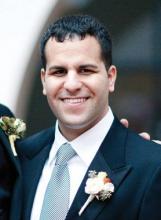It has been more than a decade since Dr. William R. Miller and Dr. Stephen Rollnick unveiled the last edition of their bestselling book, "Motivational Interviewing: Helping People Change." In that time, more than 200 randomized clinical trials have been published, and the understanding and practice of motivational interviewing (MI) has continued to evolve.
MI is a collaborative conversation between a patient and clinician that addresses ambivalence about change through attention to the language of change. MI is designed to help patients mobilize their strength, commitment, and personal resources for transformation. In addition, MI embodies acceptance and compassion, and has been described as a "way of being" that can break down barriers and establish open lines of communication between patients, clinicians, and supervisors in a profound way.
This new edition of "Motivational Interviewing" (New York: The Guilford Press, 2012), provides clinicians with an updated guide to help understand and use the principles of MI. Specifically, clinicians are taught the four confluent processes of MI: engaging, focusing, evoking, and planning. They also are taught the five communication skills, which are open questioning, affirming, reflecting, summarizing, and informing. These principles are instrumental to fostering change and promoting integrity in the lives of patients.
The authors contend that MI is about "evoking that which is already present, not installing what is missing." The authors emphasize that MI is done "for" and "with" a person as opposed to "on someone." The book does a fine job of dispelling commonly held myths associated with MI as being "a panacea" or "a gimmicky technique."
Another common myth that has persisted since the first edition of "Motivational Interviewing" is that the patient-centered approach is a passive psychotherapy, during which the therapist never reveals her or his agenda, never disagrees with the patient, and—God forbid!—never gives advice. In fact, first and foremost, MI is a collaboration and, as such, sharing information and coming up with suggestions from both sides of the therapeutic dyad is welcome and encouraged.
This text is filled with exemplary phrases that psychiatrists can incorporate into their lexicons. The authors delineate the importance of using empathic reflections and garnering respect for a patient’s autonomy while eliciting the patient’s core values. Clinicians are encouraged to acknowledge autonomy and emphasize personal choice, even when patients directly ask the clinician what to do: "I could suggest some things that have worked for other people, but the most important thing is to find what will work for you, and you’re the best judge of that. Would you like to hear some ideas?" (p. 148). Clinicians are encouraged to provide patients with "a menu of options" and continually convey compassion, respect, and hope.
MI is compatible with evidence-based clinical skills and a variety of psychotherapy perspectives, including psychodynamic psychotherapy, cognitive-behavioral therapy, experiential therapy, and family systems theory. The book illustrates clinical case examples to prepare psychiatrists who work in all different types of settings. For example, clinicians will learn how to incorporate MI into the brief medicine management visit, and the standard intake interview and assessment. MI can increase a clinician’s capacity to tolerate uncertainty while potentially decreasing clinician burnout.
The authors underscore the importance of direct feedback, coaching, and observed practice to develop proficiency in MI. The process of developing MI skill is a lifelong endeavor. In sum, this is a user-friendly, engaging, and comprehensive text that should be required reading for all practicing clinicians.
Dr. Ascher is a senior resident in psychiatry at Beth Israel Medical Center, New York, and a member of the Motivational Interviewing Network of Trainers (MINT). Dr. Levounis is chair of the department of psychiatry at the New Jersey Medical School, Newark, and also the coauthor of the book "Handbook of Motivation and Change: A Practical Guide for Clinicians" (Washington: American Psychiatric Publishing Inc., 2010).


